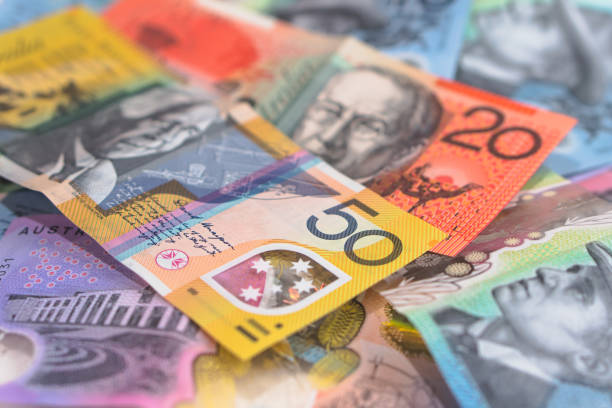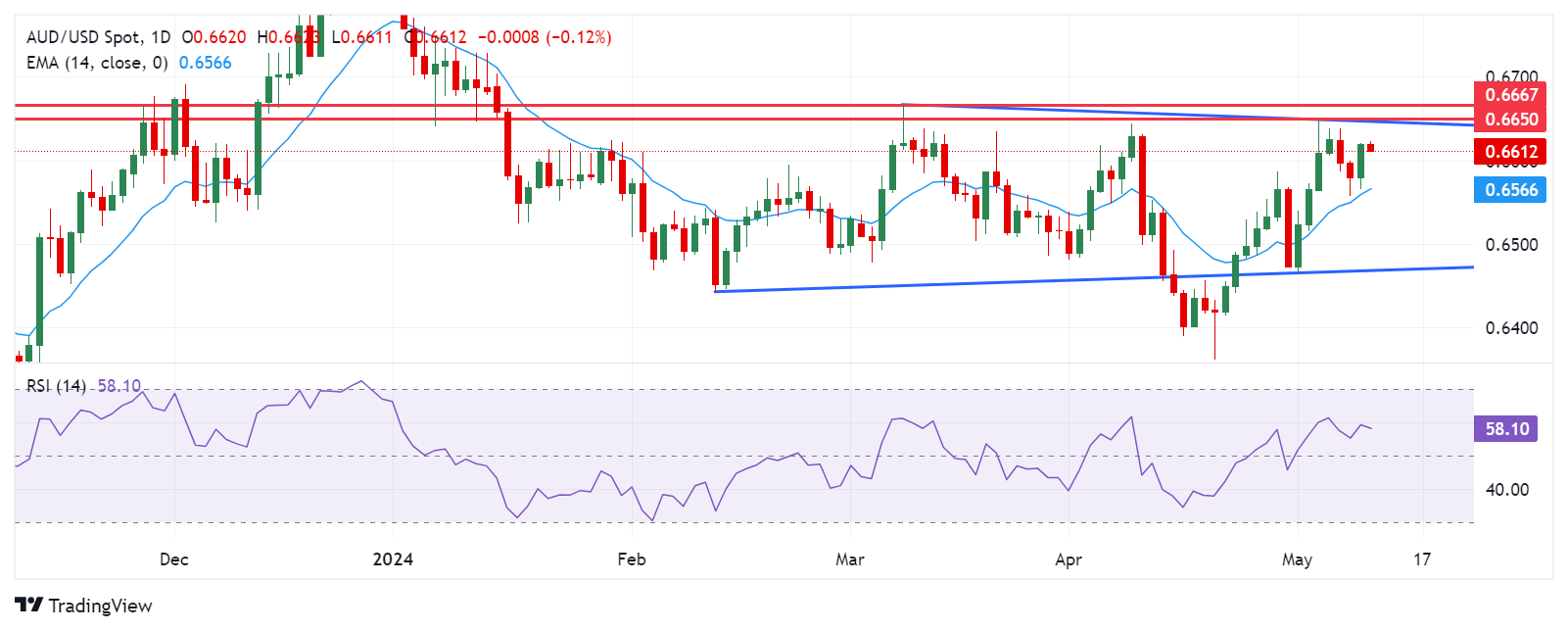Australian Dollar pulls back due to an upward correction in the US Dollar

■ The Australian Dollar retreated due to the improved US Dollar on Friday.
■ The Australian Dollar is facing pressure due to the less hawkish stance of the RBA on monetary policy.
■ The US Dollar rebounded due to the hawkish Fed to maintain higher interest rates for a longer period.
The Australian Dollar (AUD) is retracing its recent gains on Friday, following a rally on Thursday. The rally was propelled by a decline in the US Dollar (USD) as weak US Initial Jobless Claims indicated a more dovish outlook for the Federal Reserve (Fed). This helped offset pressure on the Aussie Dollar resulting from the Reserve Bank of Australia (RBA)'s less hawkish stance, especially in light of the higher-than-expected inflation data.
The Australian inflation rate dropped to 3.6% in the first quarter, from 4.1% in the previous quarter, marking the fifth consecutive quarter of slowing. However, it exceeded forecasts of 3.4%. Additionally, the Monthly Consumer Price Index (YoY) for March surged to 3.5%, surpassing the expected reading of 3.4%. The Reserve Bank of Australia (RBA) acknowledged that recent progress in controlling inflation has stalled and maintained its stance of keeping options open.
The US Dollar Index (DXY), which gauges the performance of the US Dollar (USD) against six major currencies, attempts to rebound due to the sentiment of the Federal Reserve (Fed) maintaining higher interest rates for longer. However, the decline in the US Treasury yields could contribute to pressure on the Greenback, supporting the AUD/USD pair.
In the United States (US), the preliminary Michigan Consumer Sentiment Index for May is set to be released on Friday, with expectations for a slight decrease. This index is a survey that measures sentiment among US consumers, covering three main areas: personal finances, business conditions, and buying conditions. Additionally, Chinese Consumer Price Index (CPI) data is expected on Saturday, which could have an impact on the Australian Dollar (AUD) as Australia and China share close trading ties.
Daily Digest Market Movers: Australian Dollar retreats due to less hawkish RBA
The Commonwealth Bank of Australia (CBA) has revised down its forecasts for the Australian Dollar at the end of 2024 is 0.69, down from 0.71 previously. CBA cites factors such as the interest rate gap and elevated US Treasury bond yields, which are bolstering the US Dollar. The Federal Reserve's cautious stance on high inflation and its reluctance to implement rate cuts further support the US Dollar, as reported on forexlive.com.
The US Bureau of Labor Statistics (BLS) reported that the number of individuals filing for unemployment benefits surpassed expectations. Initial Jobless Claims for the week ending May 3 increased to 231,000, exceeding estimates of 210,000 and marking a rise from the previous week's figure of 209,000.
Chinese Imports (YoY) surged by 8.4% in April, surpassing forecasts of 5.4%. Exports grew by 1.5%, higher than the anticipated 1.0% gain. These latest figures brought a positive surprise amidst concerns of potential additional tariffs on Chinese goods by the United States (US). However, Trade Balance USD increased to $72.35 billion from March’s reading of $58.55 billion, slightly below the expected $76.7 billion.
Australian Retail Sales (QoQ), measuring the volume of goods sold by retailers in Australia, declined by 0.4% in the first quarter of 2024, swinging from the 0.4% growth in the fourth quarter of 2023.
RBA Governor Michele Bullock stressed the importance of staying alert to inflation risks. Bullock believes current interest rates are appropriately positioned to guide inflation back towards its target range of 2-3% by the second half of 2025 and to the midpoint by 2026.
Societe Generale has released a note regarding the Reserve Bank of Australia, emphasizing their view that the RBA's optimism regarding economic growth is misplaced. The institution anticipates a downturn in economic growth in Australia, with the potential for surprises on the downside. They attribute this forecast partly to the prevalent effects of RBA rate hikes filtering into the economy.
According to a Reuters report, Federal Reserve Bank of Boston President Susan Collins said on Wednesday that a need for a period of moderation in the US economy to achieve the central bank's 2% inflation target. Collins highlighted that demand will need to ease to reach this goal. She expressed confidence that Fed policy is well-aligned with the current economic outlook.
On Tuesday, Minneapolis Fed President Neel Kashkari said that the prevailing expectation is for rates to stay steady for a considerable duration. Although the likelihood of rate hikes is minimal, it's not entirely ruled out.
Technical Analysis: Australian Dollar hovers above the psychological level of 0.6600
The Australian Dollar trades around 0.6610 on Friday. The AUD/USD pair is consolidating within a symmetrical triangle pattern, with the 14-day Relative Strength Index (RSI) indicating a bullish bias by hovering above the 50-level.
The AUD/USD pair could test the upper boundary around the swing area at the level of 0.6650. A break above this level may lead the pair to retest March’s high of 0.6667, with further upside potential toward the psychological level of 0.6700.
On the downside, immediate support for the AUD/USD pair is expected at the psychological level of 0.6600, followed by the 14-day Exponential Moving Average (EMA) around 0.6566. If the pair breaches below the EMA, it could face additional selling pressure, potentially targeting the region around the lower boundary of the symmetrical triangle near the level of 0.6465.
AUD/USD: Daily Chart
* The content presented above, whether from a third party or not, is considered as general advice only. This article should not be construed as containing investment advice, investment recommendations, an offer of or solicitation for any transactions in financial instruments.




